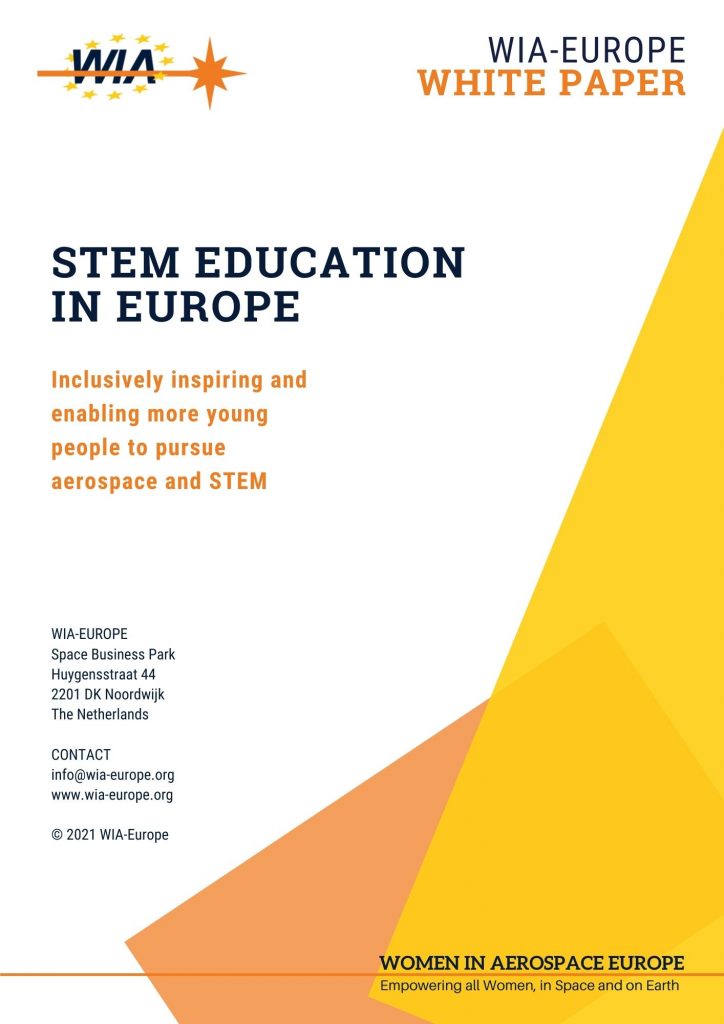Working Group 1: STEM Education in Europe
STEM (Science, Technology, Engineering and Mathematics) comprises the main areas of study on which scientific and technological industries, including the aerospace sector, lay their foundations.
In recent decades, institutions and governments have detected a more than consolidated tendency: a very low uptake of STEM studies throughout the whole education process, especially in the case of girls (WISE 2017, British Science Association 2020, UNICEF 2020, UNESCO, Microsoft 2017). From a very early age, a huge amount of STEM potential is being lost, which leads to slower scientific and technological progress in the industry. This reality not only affects scientific and technological industries, but it also burdens our society in far more aspects than imagined, preventing it from: reaching Sustainable Development Goals, generating problem-solving, innovative and critical thinking citizens (21st century skills, preparing next generation for jobs that don’t yet exist, OECD report 2018), creating inclusive and diverse teams of people, interconnection of cultures, etc.
This White Paper gives a concise summary of the main issues, transverse across European countries, focussing on early inspiration, retention of young women, the contribution and influence of peers/family, the perception of women in STEM careers, and the importance of European coordination.
It delivers a plentiful set of recommendations to address each weakness, emphasising the role of the aerospace sector and the contribution that organisations such as WIA-Europe can make to society, both locally and at a European level, in order to encourage young people, especially girls, to pursue pathways into STEM.


